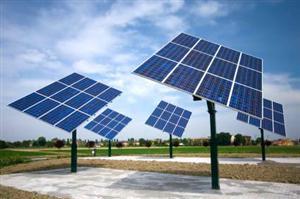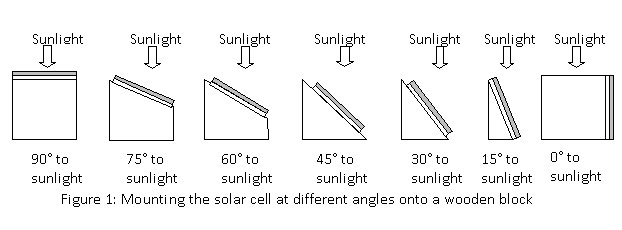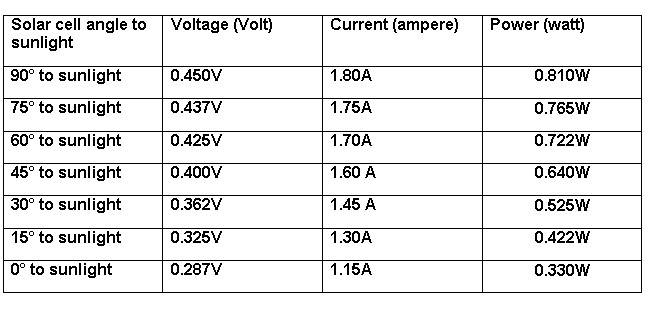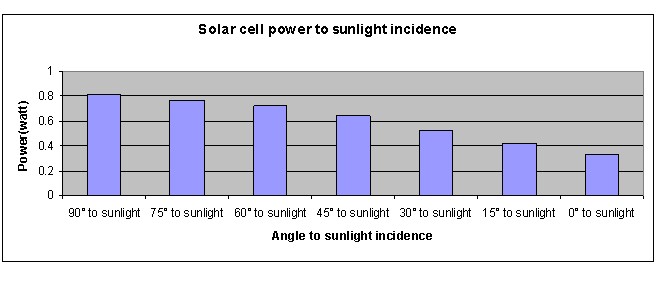Hypothesis
The power output generated by a solar cell will be highest when the solar cell is positioned perpendicular to the direction of sunlight.
Overview
Solar cells
Solar cells are used to convert energy from the sun into electrical energy which can be immediately used or stored in a battery for later use. They are made from silicon which is found in abundance on our planet. However the cost of converting raw silicon into useful solar cells is very expensive. Currently, there are 3 types of solar cells which are commonly used:
Monocrystalline solar cells have a good level of efficiency of between 14% - 18% of energy conversion, but these solar cells are expensive.
Polycrystalline solar cells are a cheaper alternative, but these have a lower efficiency rate of conversion of between 11% - 13%.
Amorphous solar cells are another cheaper alternative; however, these have the lowest energy conversion rate of between 8% - 10%.
Because solar cells are very expensive, it is necessary to optimize their performance to obtain a quick return on investment. This is why solar trackers are useful in enabling solar panels to work at high efficiency throughout the day.
Solar tracker
The rotation of our planet causes the sun to rise in the east and set in the west. From sunrise to sunset, the sun travels 180 degrees across the horizon. Since solar cells produce maximum output when the panels are placed perpendicular to the sun position, the solar tracker is a motorized device, which adjusts the disposition of the solar panel to follow or"track" the angle of incidence of sunlight throughout the day. This allows the solar panel to work at full efficiency at all times during the day.
Scientific Terms
Solar cell, photovoltaic cell, solar tracker, monocrystalline cells, polycrystalline cells, amorphous cells, ammeter, and voltmeter
Conclusion
The hypothesis is proven to be correct. The power output generated by solar cells will be at its highest when the solar cells are positioned perpendicular to the direction of sunlight.
The use of a solar tracker will help the solar panel follow the path of the sun and this allows the solar panel to remain perpendicular to the angle of incidence of the sun's rays, for maximum efficiency and power output.
Also consider
Try to repeat the experiment using amorphous solar cells.
Try to simulate real life as much as possible. Introduce elements such as wind, water (rain) and ice to the test environment. How do the results differ? Will your results differ on a cloudy day?
Related videos
Hey there! Here are some awesome videos about this science project that we think you'll really like. They're not only super fun, but they'll also help you learn more about the science behind the project. So sit back, relax, and get ready to have some fun!!





